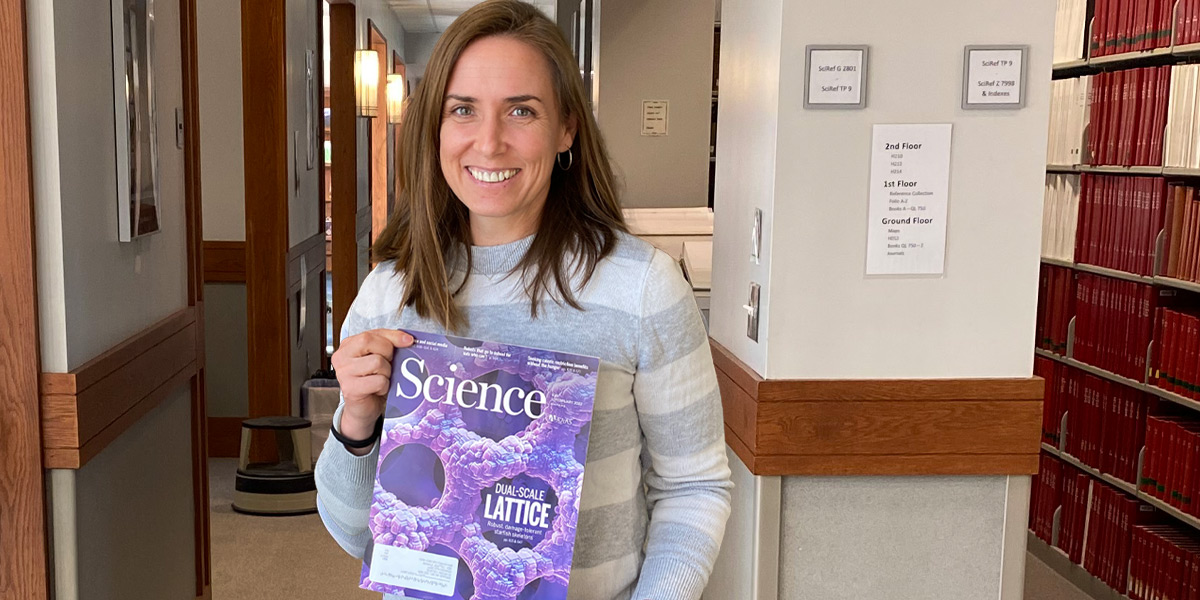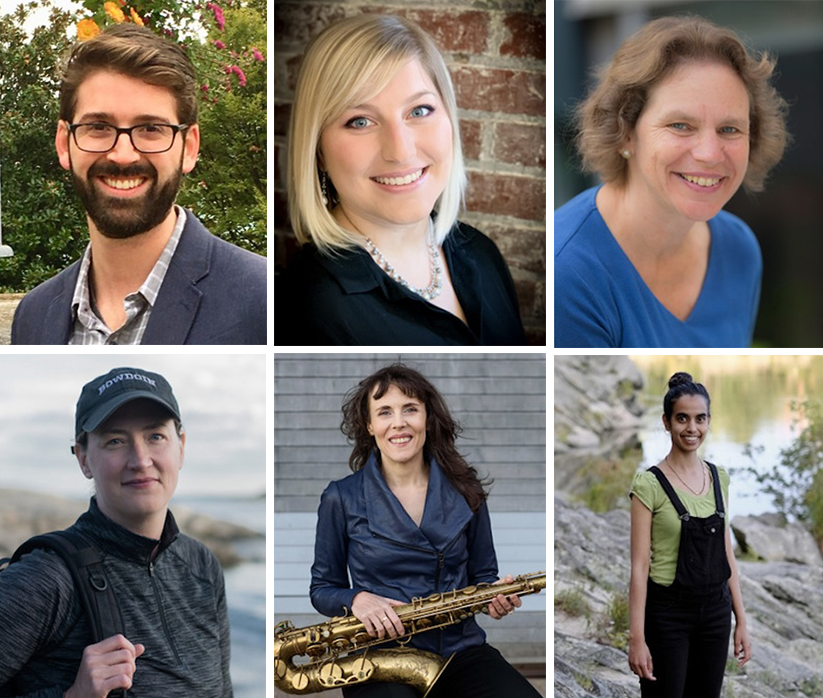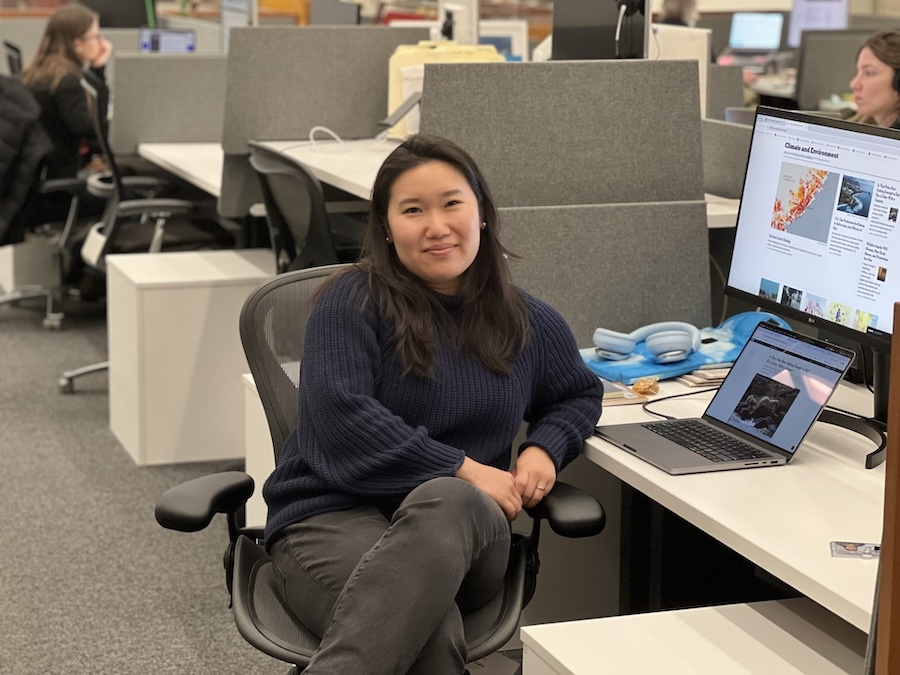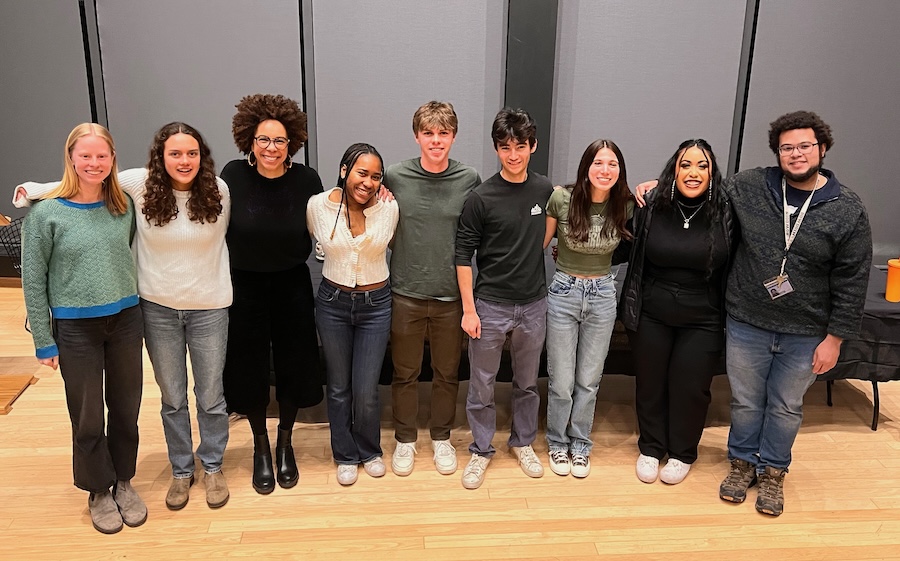Emily Peterman's Research into the Potential of Starfish Graces Cover of "Science"
By Rebecca Goldfine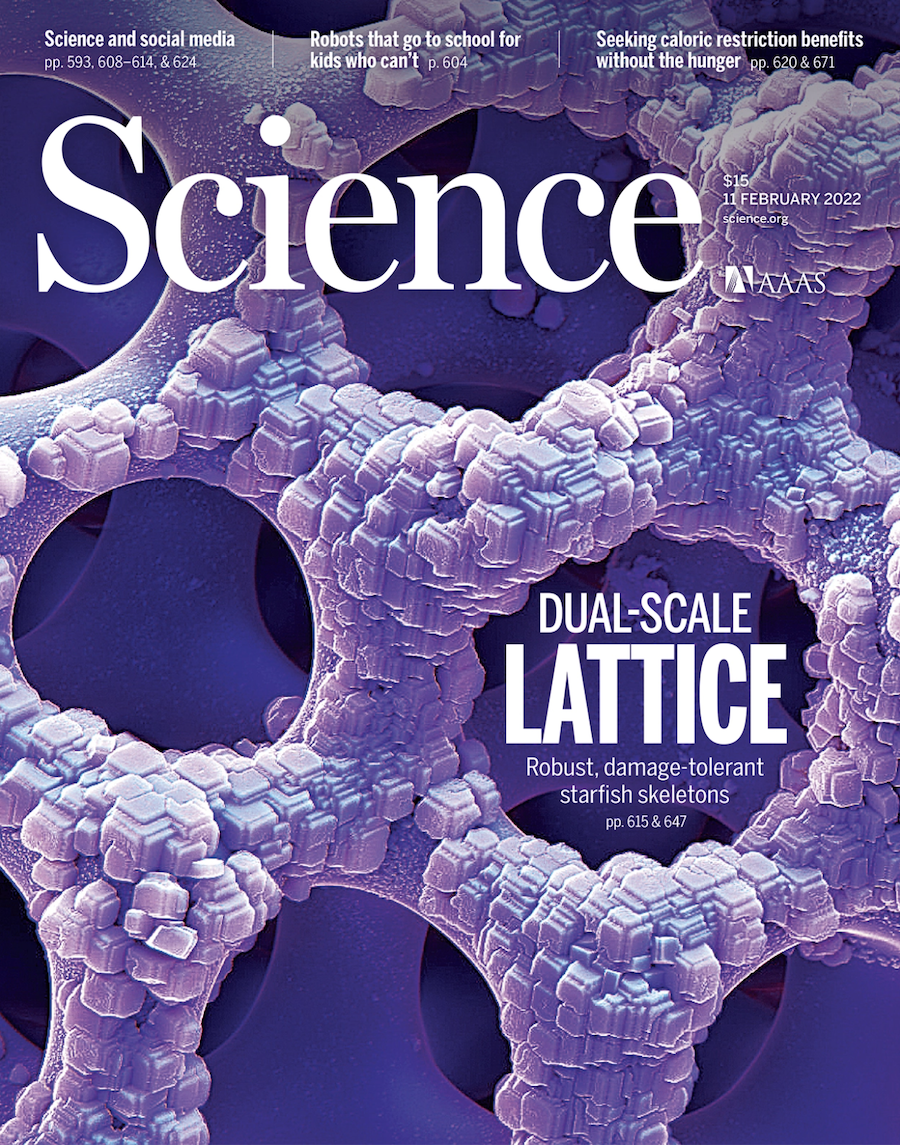
Since 2017, Peterman, an associate professor of earth and oceanographic science at Bowdoin, has been exploring a number of materials found in nature with a team of scientists at Virginia Tech and Harvard University.
Their work on the knobby starfish (or sea star) was just featured on the February 11, 2022, cover of Science, in the article "Dual-Scale Lattice: Robust, damage-tolerant starfish skeletons."
"Nature is incredibly clever," Peterman said in a recent interview. "And by understanding how nature creates really strong materials that are also really light, we can gain insight into how we can generate really strong, damage-resistant materials. These insights may have applications for aerospace, lightweight cars that would use less fuel, or a hundred other applications."
While the rest of her team specializes in material and biological processes, one area of Peterman's expertise is mineral crystallography. She examines the strength of rocks, or rheology, and the causes of their rupture in Earth's long geological record. For her work on this materials project, she used an electron-scanning microscope at Bowdoin to determine the crystal structure and orientation of the various objects selected by the team.
"Our goals have been to try to understand how nature grows these minerals and what are the advantages and the limitations for how they're grown," which includes looking at defects in the designs, Peterman explained.
The team has found many miniscule but important variations in starfish skeletons, spiny urchins, and eggshells. Indeed, Peterman has detected important distinctions just among the eggshells of different bird species. And within these nuances may lie a model that humans can mimic to construct novel durable materials.
For instance, in her analysis of eighteen different eggshells—from eggs of emus to doves and the common chicken—Peterman found that each had a unique crystallography.
"Some of them have fanlike crystals, some of them have complex three-dimensional, puzzle-piece crystals, some of them have pores that allow for gas transport," she said. "Nature specially engineered them for the environments in which the organisms are living. That is why nature is so great; because of its many different microenvironments, there is enough variation that we can see the differences and learn from them."
Read more about Peterman's recently published research in ScienceDaily.
